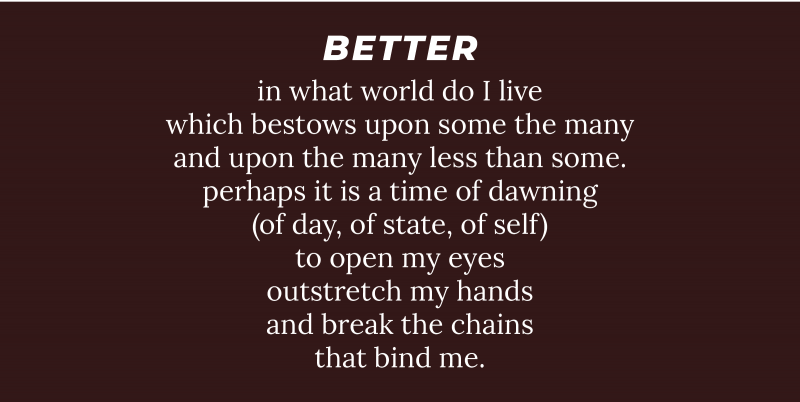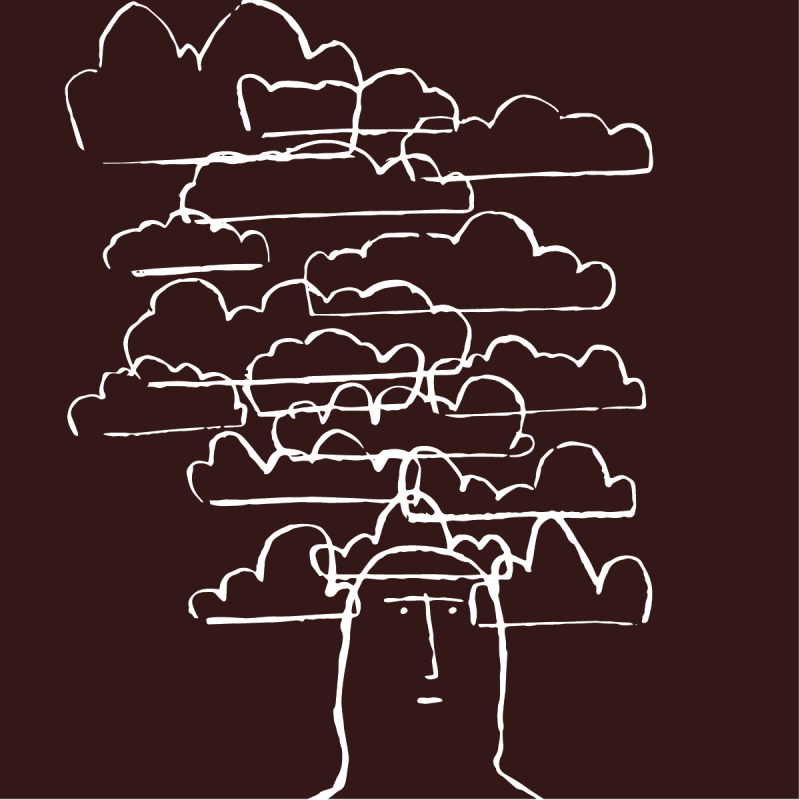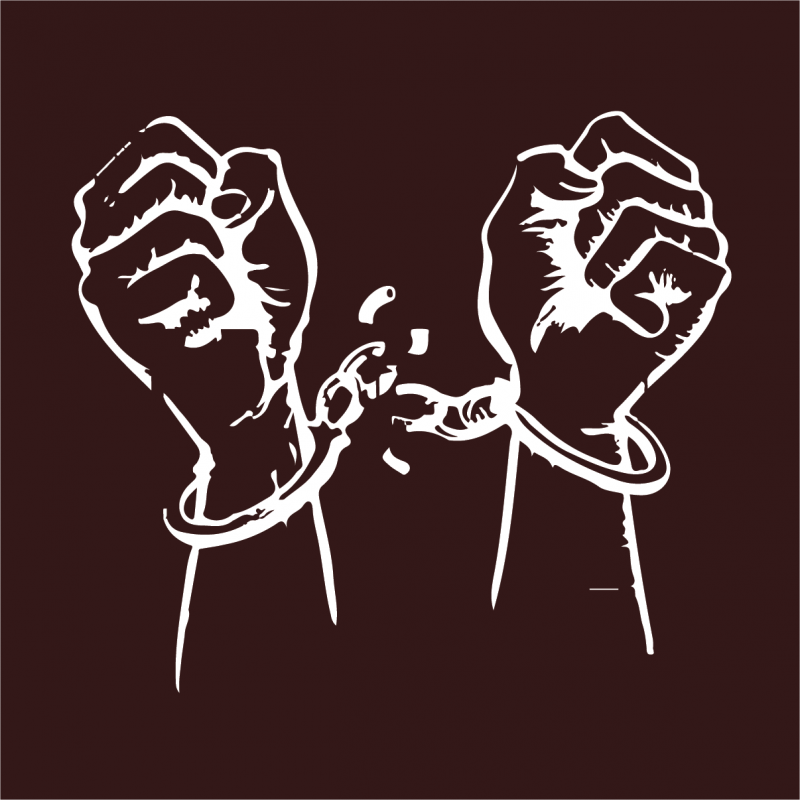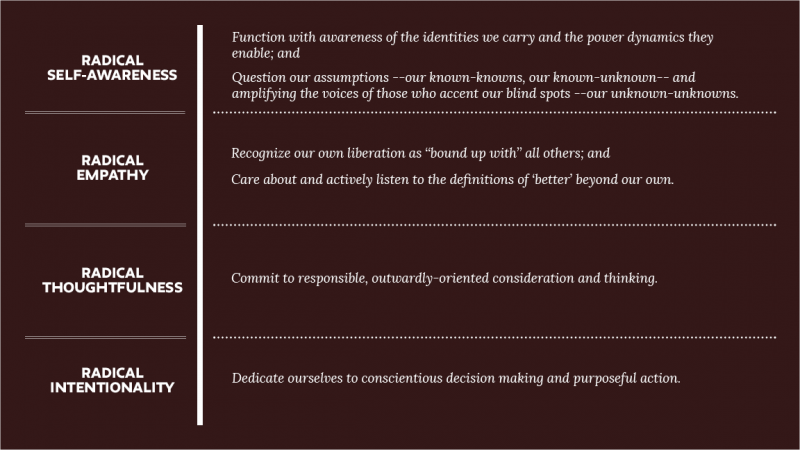IN PURSUIT OF BETTER
Posted on November 12, 2018
WHAT IS ‘BETTER’
I have serious concerns about contemporary Design’s vision of and approach to the concept of better. [1] Frequently, these visions and approaches become referent as universal truths; “eyes on the street” is better [2], efficiency is better [3], blockchain is better [4]. Yet, these are not universal truths. There is no one, singular ‘better.’
Better is a subjective reflection of the present challenges a specific and unique individual or public face. Thus, there are many versions and varieties of better. Insinuations by designers, which suggest otherwise, come dangerously close to obfuscating personal perspective with designerly expertise. I focus here, primarily, on Speculative Design, but this argument can and should be considered relevant to the broader fields of design, particularly, Service, Strategic, Civic, and Design for International Aid.
 BETTER BY WHOM, FOR WHOM, WITH WHOM
BETTER BY WHOM, FOR WHOM, WITH WHOM
Many designers’ presumptions of what constitutes ‘better’ are clouded by deeply ingrained forms of oppression; ableism, heteropatriarchy, white supremacy, racial capitalism, and settler colonialism. [5] Moreover, their approaches to implementing these visions of ‘better,’ tend to lack the deeply reflexive, inclusive, and collaborative thought processes and practices necessary to actually take on those systemic barriers.
Take for example, the engaging dialogue on MoMA’s Design and Violence page, which followed John Thackara’s response to Burton Nitta’s Speculative Design project, “Republic of Salivation.” The digital conversation traversed, primarily, around the utility, or lack thereof, of Speculative and Critical Design. [6] What was truly notable, however, was the underlying presumptions of designers, like James Auger and Tim Parsons. As Luiza Prado and Pedro Oliveira emphasize in their article, Questioning the “Critical” in Speculative and Critical Design, Auger and Parsons’ arguments for the relevance of Speculative Design, consciously or unconsciously, discount considerations of deeply entrenched issues, like racial capitalism, classism, and globalization. [7]
A FIELD UNCHECKED AND UNQUESTIONED
I tend to believe Auger’s statements exemplify the kinds of considerations many designers embed into their work. Auger simultaneously omits a deep consideration of who is bettered by his version of Speculative Design, while also alienating and further institutionalizing disregard for the marginalized communities he fails to consider. He unconsciously prioritizes designing for the betterment of some, while leaving out the many.
Unfortunately, Auger is not in the minority. Many designers, design studios, and design institutions rely on rhetoric about their capacity to envision and create a ‘better’ world. [8] Yet, in spite of these claims, true contextualization of what ‘better’ actually means, and for whom, is almost always lacking.

UNTIL [WE] ARE FREE
I would argue this must change. Certain expectations of self-awareness and self-criticality must become part of the process for exploring and envisioning what ‘better’ can, should, might be. A good starting point for designers might be raising and answering a specific set of questions. Questions like:
- What does it mean to change the world?
- What does it mean to make it better?
- With or for whom?
- According to whom?
- Under what conditions?
- In what contexts?
It was James Baldwin who said, “We cannot be free until they are free.” [9] We, as designers, are the “they” in that statement. We have, generally, given ourselves implicit permission to ideate, speculate, create, and act without examining the means by which those actions reinforce and perpetuate circumstances of oppression.
This doesn’t have to be the case though. Designers and design institution can and should endeavor to be continuously conscious and critical of our designerly intuitions, intentions, and decisions. We must strive to break our binds to oppressive assumptions of universality. We must be diligently aware of what we truly mean by ‘better’ and what that vision means for others. Until this is the case, we are bound by the oppressive versions of ‘better’ we knowingly and unknowingly perpetuate.
IN PURSUIT OF BETTER WORLDS
I contend we can do better. To do so though, we will need to expect more of ourselves. Our capacities must expand and our ambitions must become more specific. Designers will need to move with, strive for, and embody radical self-awareness, empathy, thoughtfulness, and intentionality. [10]

Based on this expanded set of traits and responsibilities, I believe we can improve our ability to identify where and how we intervene. The ambition will no longer be to suggest our work necessarily leads to a better world. Instead, we can think radically about the complexity we swim within [11], navigate wisely, intervene thoughtfully, and, hopefully, contribute to many versions of a non-oppressive ‘better.’
[1] “Better systems, better, institutions, better governance.” Jamer Hunt referencing the potential impact of Blockchain. Transdisciplinary Design Seminar. November 2, 2018.
[2] Jacobs, Jane. The Death and Life of Great American Cities. , 1961. Print.
[3] Johnson, Steven. Emergence: The Connected Lives of Ants, Brains, Cities, and Software. New York: Scribner, 2001. Print.
[4] Tapscott, Don, and Alex Tapscott. Blockchain Revolution: How the Technology Behind Bitcoin Is Changing Money, Business, and the World. , 2016. Print.
[5] Costanza-Chock, S. “Design Justice: towards an intersectional feminist framework for design theory and practice.” Proceedings of the Design Research Society 2018. AND Boehnert, Johanna and Onafuwa, Dimeji. “Design as Symbolic Violence: Reproducing the ‘isms’ + A Framework for Allies.” Intersectional Perspectives on Design, Politics and Power, School of Arts and Communication, Malmö University. 15 November 2016
[6] Design & Violence, “the republic of salivation”
[7] Prado, Luiza, and Pedro Oliveira. “Questioning the ‘Critical’ in Speculative & Critical Design.” Medium, Medium, 4 Feb. 2014, medium.com/a-parede/questioning-the-critical-in-speculative-critical-design-5a355cac2ca4. REFERENCING James Auger’s quote: “What is this obsession with class systems? The UK may have its financial problems but most of us stopped obsessing about these divides in the distant past.”
[8] The following is a drastically incomplete list of example studios, which utilize the word “better” or similarly themed vocabulary to describe what they do. SEE: IDEO, https://www.ideo.com/about, (“positive impact”); IDEO.ORG, https://www.ideo.org/, (“improve”); FJORD, https://www.fjordnet.com/about-us/what-we-do/, (“There’s always a better way, and we make it our business to look for it.”); and Frog Design, https://www.frogdesign.com/about, (“We are fanatical about improving the world.”).
[9] James Baldwin. “My Dungeon Shook: Letter to My Nephew on the One Hundredth Anniversary of the Emancipation.” The Fire Next Time. Ed. James Baldwin. New York: The Dial Press, 1963. (p10).
[10] “If you have come here to help me, you are wasting your time. But if you have come because your liberation is bound up with mine, then let us work together.” Aboriginal activists group, Queensland, 1970s.
[11] Stearns, M. “Embracing Our Complex Mess: Playful and Poetic Mysticism,” sds.parsons.edu. 2018.
max s.